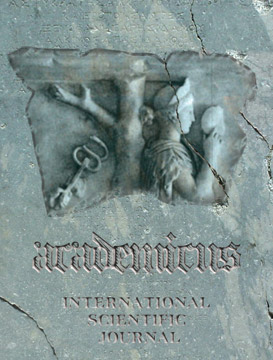Title:
Polygraph Tests - Benefits and Challenges
Full Reference List:
| 1. | Ben-Shakhar, G., Bar-Hillel, M., & Lieblich, I. (1986). Trial by polygraph: Scientific and juridical issues in lie detection. Behavioral Sciences & the Law, 4(4), 459- 479. Retrieved from Academic Search Premier |
| 2. | Brown, T., & Murphy, E. (2010). Through a scanner darkly: Functional neuroimaging as evidence of a criminal defendant’s past mental states. Stanford Law Review, 62(4), 1119-1208. Retrieved from http://search.proquest.com/ docview/224079289? |
| 3. | Gibson, M. (2001). The truth machine: Polygraphs, popular culture and the confessing body. Social Semiotics, 11(1), 61-73. doi:10.1080/10350330120010966. |
| 4. | Grubin, D., & Madsen, L. (2005). Lie detection and the polygraph: A historical review. Journal of Forensic Psychiatry & Psychology, 16(2), 357-369. doi:10.10 80/14789940412331337353. |
| 5. | Happel, M. D. (2005). Neuroscience and the detection of deception. Review of Policy Research, 22(5), 667-685. doi:10.1111/j.1541-1338.2005.00166. |
| 6. | Jensen, M. L., Meservy, T. O., Burgoon, J. K., & Nunamaker, J. F. (2010). Automatic, multimodal evaluation of human interaction. Group Decision and Negotiation, 19(4), 367-389. doi:http://dx.doi.org/10.1007/s10726-009-9171- 0. |
| 7. | Kaste, M. (2015). Trial of polygraph critic renews debate over tests’ accuracy. Retrieved from http://www.npr.org/2015/01/02/371925732/trial-ofpolygraph-critic-renews-debate-over-tests-accuracy. |
| 8. | Kumar, S. (2012). Impact of galvanic skin response on emotional intelligence and psychological wellbeing of criminals. Indian Journal of Positive Psychology, 3(4), 463-466. Retrieved from http://search.proquest.com/docview/1614160474? |
| 9. | Meijer, E. H., Smulders, F. Y., Johnston, J. E., & Merckelbach, H. J. (2007). Combining skin conductance and forced choice in the detection of concealed information. Psychophysiology, 44(5), 814-822. doi:10.1111/j.1469-8986.2007.00543. |
| 10. | Metzinger, T. (2006). Exposing LIES. Scientific American Mind, 17(5), 32-37. Retrieved from Academic Search Premier. |
| 11. | Mitchell, G. (2003). The polygraph and lie detection. Security Management, 47(7), 158. Retrieved from http://search.proquest.com/docview/231172659? |
| 12. | Saxe, L. (1994). Detection of deception: Polygraph and integrity tests. Current Directions in Psychological Science (Wiley-Blackwell), 3(3), 69-73. doi:10.1111/1467-8721.ep10770416. |
| 13. | Saxe, L., & Ben-Shakhar, G. (1999). Admissibility of polygraph tests: The application of scientific standards post-daubert. Psychology, Public Policy, and Law, 5 (1), 203-223. DOI: 10.1037//1076-8971.5.1.203. |
| 14. | The truth about lie detectors (aka Polygraph tests). (2004). American Psychological Association. Retrieved from http://www.apa.org/research/ action/polygraph.aspx. |
| 15. | Walczyk, J. J., Schwartz, J. P., Clifton, R., Adams, B., & et.al. (2005). Lying personto-person about life events: A cognitive framework for lie detection. Personnel Psychology, 58(1), 141-141+. Retrieved from http://search.proquest.com/ docview/220137704 |
| 16. | White, D. Jr. (2001). Ask me no questions, tell me no lies: Examining the uses and misuses of the polygraph. Public Personnel Management, 30(4), 483-493. Retrieved from http://search.proquest.com/docview/215929568? |
Back to article
Academicus
International Scientific Journal
pISSN 2079-3715
eISSN 2309-1088
Address:
Sheshi i Flamurit, Rruga Muze
Al-9401 Vlorë, Albania
Tel: +355 68 60 60 555
info@academicus.edu.al
https://academicus.edu.al


